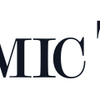Business News

The Economic Times: Breaking news, views, reviews, cricket from across India
Updated: 3 hours 59 min ago
Can Modi pay for his Delhi promises?
Categories: Business News
EV makers bet big on premium. Will India buy?
Mumbai: India’s nascent electric vehicle market is posing a distinct challenge for automakers—how to balance consumer demand with product offerings.While the current success of EVs is rooted in affordable models, priced below Rs 15 lakh, the upcoming pipeline of electrics seems to be steering in the opposite direction, with companies such as Maruti Suzuki, Tata Motors and Mahindra & Mahindra preparing to test consumer appetite for pricier models. This is despite the clear preference for more budgetfriendly options, with EVs under Rs 15 lakh comprising 57% of sales currently.Data collated by Jato Dynamics, an automotive market research firm, shows upcoming launches of Mahindra's XEV 9e (Rs 21.9-30.50 lakh) and BE 6 (Rs 18.9-26.90 lakh), Tata’s Safari EV (Rs 32 lakh), and Maruti’s eVitara (Rs 17-22.50 lakh), underscoring the trend towards upscale models. 118073999This raises a crucial question: Will the growing middle class, the demand driver for affordable electric cars in India, take to the pricier models? Companies are facing the dual challenge of not only offering high-end features for premium buyers but also retaining their stronghold in the key value-driven segment that has been the primary driver of EV sales so far.“The upcoming launches will be critical in determining whether India’s electric future is driven by the premium segment or whether mass-market, affordable models will continue to dominate the market,” says Ravi Bhatia, president, Jato Dynamics. 118074014The key factor in this changing market dynamics could lie in offering smart, high-end features that appeal to discerning buyers, convincing them to make the switch to electrics, says Bhatia, adding the next few months could determine the trajectory of the EV market.Demand for premium vehicles is rising in India thanks to a growing number of households with enhanced discretionary incomes and aspirations. This is spurring carmakers such as MG Motor which plans to launch the Cyberster and M9 electric models over the next few months.Mirrors China's Experience“With the launch of the Windsor, and battery-as-a-service (BaaS), we developed a solution for incremental acquisition cost of EVs by splitting the cost of the battery through smart finance programmes,” says Rajeev Chaba, CEO emeritus, JSW MG Motor India. Noting weak vehicle resale as one of the challenges in EV adoption, Chaba says the company has sought to address this through the 3-60 buyback plan.Indian automakers’ strategy to go upmarket for electrics mirrors China’s experience, where McKinsey’s latest Auto Consumer survey shows premium vehicle owners are switching to feature-rich EVs. Local manufacturers are hoping to replicate this, even as they maintain their strong presence in value segments, say experts.
Categories: Business News
Fashion: Metallics are the new neutral
Categories: Business News
Sedans: Vanishing breed of 3-box legacy
Categories: Business News
What led to Alaska plane crash?
Categories: Business News
Pharma exports seen rising 2x by 2030: Report
India's pharma exports are expected to double to USD 65 billion by 2030 and touch USD 350 billion in value terms by 2047, moving to top five position globally by diversifying its product basket, according to a report. While India is the largest supplier of generic drugs globally, accounting for one in five generic drugs sold worldwide, the nation ranks 11th in terms of export value. As per the Bain & Company's report, 'Healing the World: Roadmap for Making India a Global Pharma Exports Hub', India can potentially secure a position among the top five nations in export value by 2047 by innovating and diversifying its export basket to include specialty generics, biosimilars, and innovative products. The findings in the report were formulated in collaboration with Indian Pharmaceutical Alliance (IPA), Indian Drugs Manufacturers' Association (IDMA), and Pharmexcil. "The transition from volume-based to value-led growth is essential for Indian pharma to secure its rightful place in the global market. Innovation, including the shift towards specialty generics, biosimilars, and novel products, will be the key to India's pharmaceutical future," Sriram Shrinivasan, Partner, Bain & Company, said. With the right focus on quality, regulation, access to global markets, talent, and entrepreneurial innovation, India can rise to be among the top-five pharma exporters globally by 2047, he added. Indian Drug Manufacturers' Association (IDMA) National President Viranchi Shah highlighted that India can become one of the leaders in pharma exports, but needs strategic interventions. Bulk drug parks are key to API export growth -- India must scale efforts to revive and strengthen its API industry while improving energy supply, waste treatment, and road connectivity, he added. Indian Pharmaceutical Alliance (IPA) Secretary General Sudarshan Jain said India aims to become a USD 30-35 trillion economy by 2047 and to achieve that, the pharmaceutical industry must excel on all fronts. "It is crucial to double down on Indian pharmaceutical exports, which currently account for 6 per cent of India's total merchandise exports by value," he added. The report stressed that key industry segments like APIs, biosimilars, and generic formulations were poised to grow significantly going ahead. Besides, collaboration between the government and private sector crucial for global competitiveness, it highlighted.
Categories: Business News

